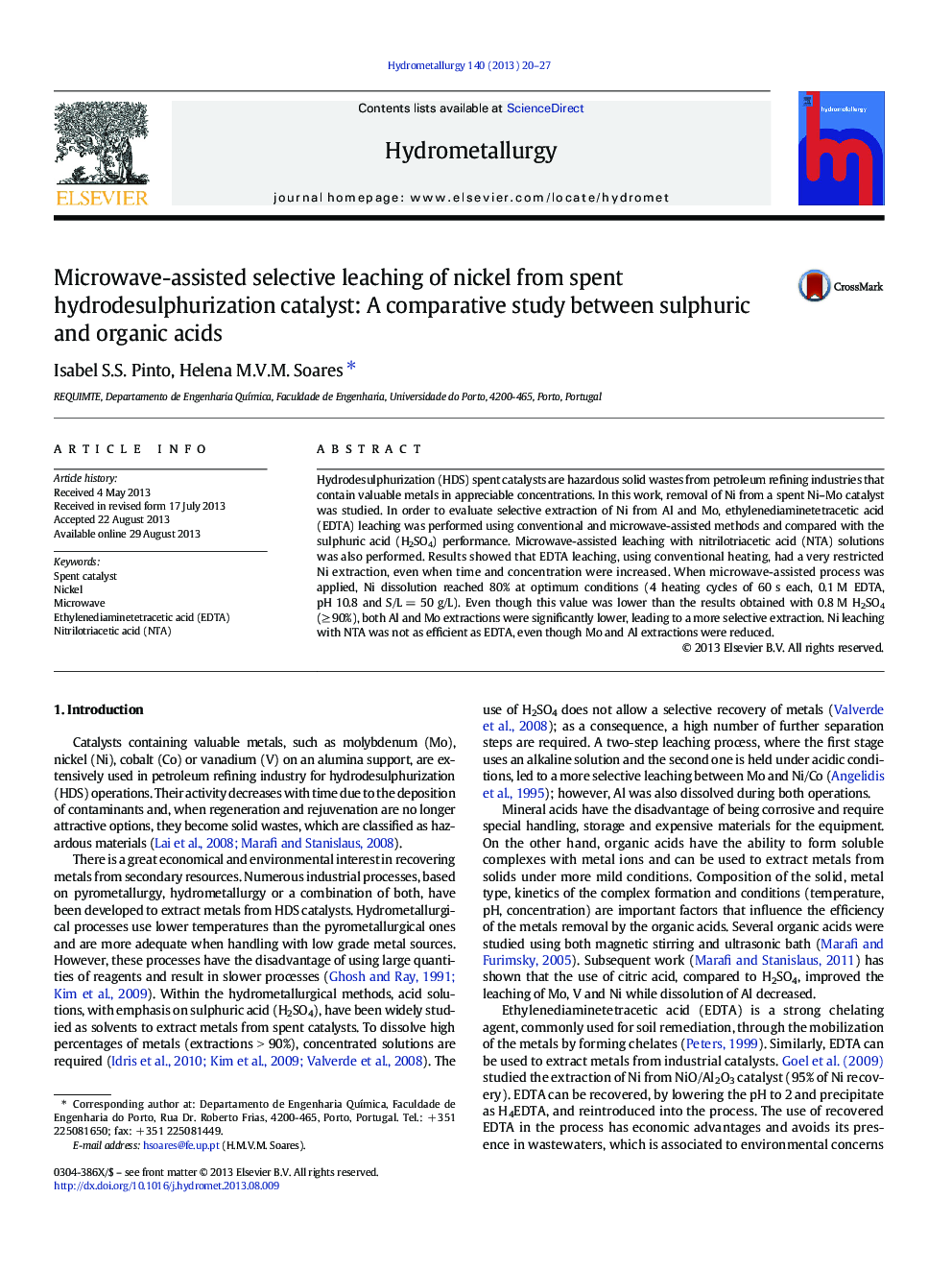| Article ID | Journal | Published Year | Pages | File Type |
|---|---|---|---|---|
| 212296 | Hydrometallurgy | 2013 | 8 Pages |
•Microwave-assisted leaching of Ni from Ni-Mo spent HDS catalysts was studied.•H2SO4, EDTA and NTA were compared to dissolve Ni selectively over Al and Mo.•Microwave heating highly enhances Ni removal through complexation with EDTA.•H2SO4 leads to higher Ni extraction but EDTA is more selective.
Hydrodesulphurization (HDS) spent catalysts are hazardous solid wastes from petroleum refining industries that contain valuable metals in appreciable concentrations. In this work, removal of Ni from a spent Ni–Mo catalyst was studied. In order to evaluate selective extraction of Ni from Al and Mo, ethylenediaminetetracetic acid (EDTA) leaching was performed using conventional and microwave-assisted methods and compared with the sulphuric acid (H2SO4) performance. Microwave-assisted leaching with nitrilotriacetic acid (NTA) solutions was also performed. Results showed that EDTA leaching, using conventional heating, had a very restricted Ni extraction, even when time and concentration were increased. When microwave-assisted process was applied, Ni dissolution reached 80% at optimum conditions (4 heating cycles of 60 s each, 0.1 M EDTA, pH 10.8 and S/L = 50 g/L). Even though this value was lower than the results obtained with 0.8 M H2SO4 (≥ 90%), both Al and Mo extractions were significantly lower, leading to a more selective extraction. Ni leaching with NTA was not as efficient as EDTA, even though Mo and Al extractions were reduced.
